Abstract
Most nereid polychaetes are strictly semelparous, a single episode of reproduction being invariably followed by death. Endocrine manipulation in Nereis diversicolor by the regular implantation of cerebral ganglia from immature donors unveils characteristics associated with a capacity to engage in repeated gametogenic cycling. Such manipulation permits full maturation of the gametes but blocks spawning. Gamete resorption then leads on to another bout of gametogenesis and a new cohort of gametes is formed. The neurosecretory system adopts a cyclical pattern of activity, which parallels that of gametogenesis. Repair and maintenance of the soma continue throughout sexual maturation, as shown by the persistence of feeding and the capacity for regenerative segment proliferation. In consequence, life is extended apparently indefinitely. These latent capacities are reminiscent of features of iteroparous life histories, characterized by repeated breeding, and are postulated to be vestiges of an iteroparous ancestry. They also constitute a preadaptation for iteroparity and reveal how readily a reversal to this condition could occur. The study suggests that reproductive strategies may be unexpectedly labile in even their most fundamental aspects.
Full text
PDF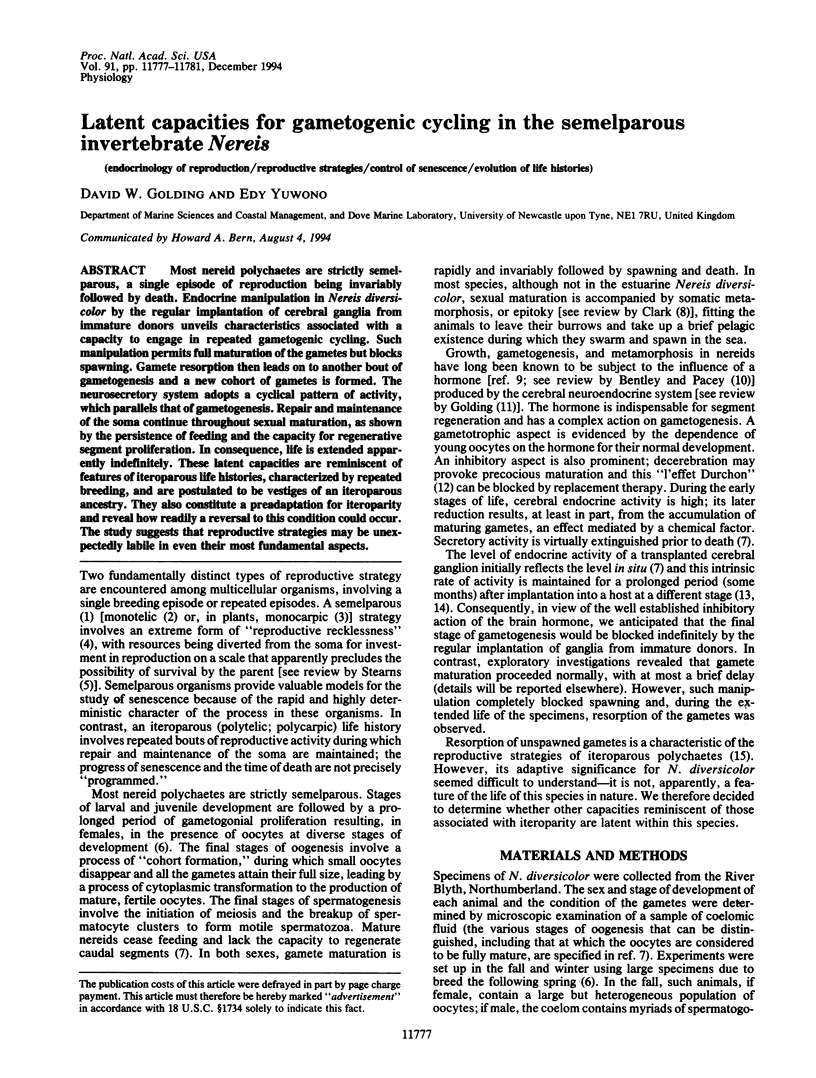
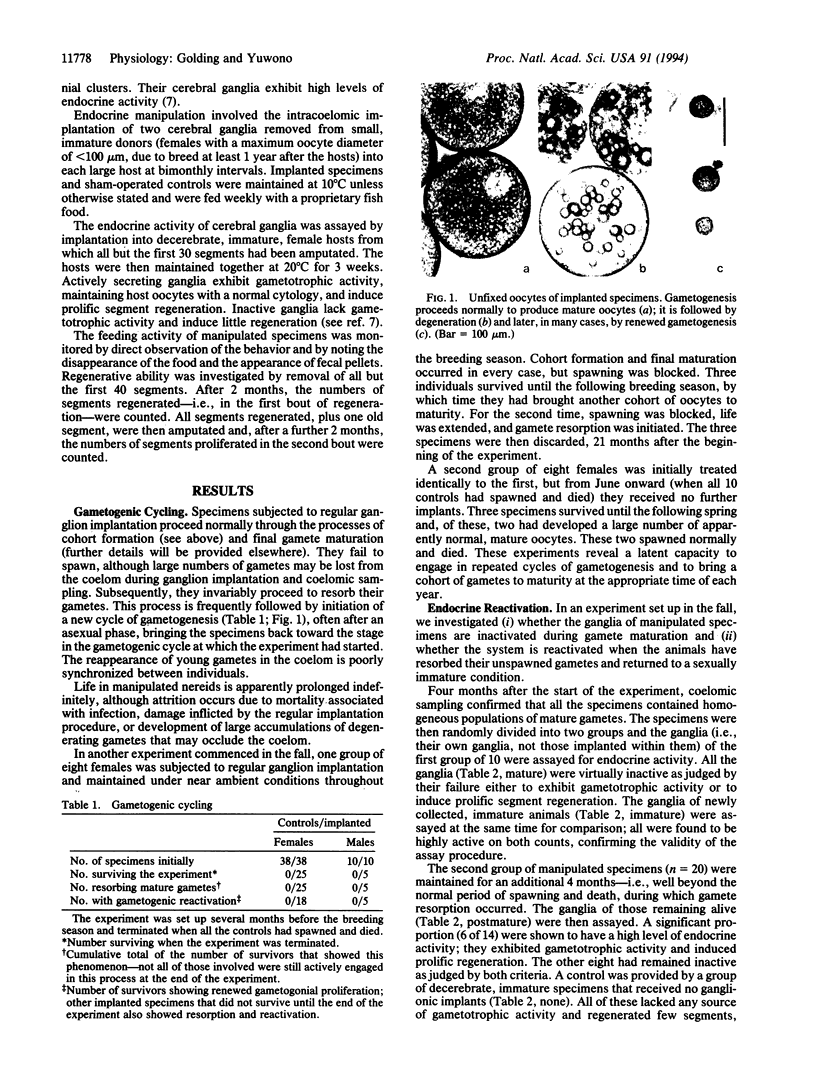
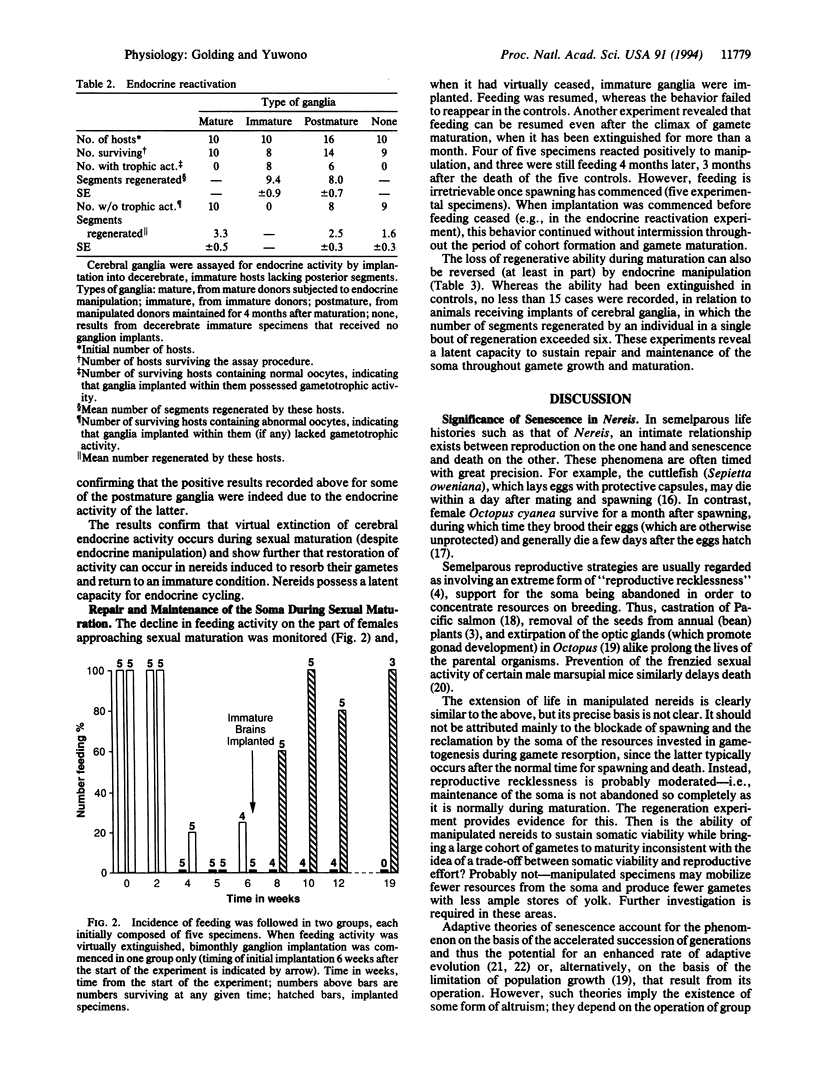
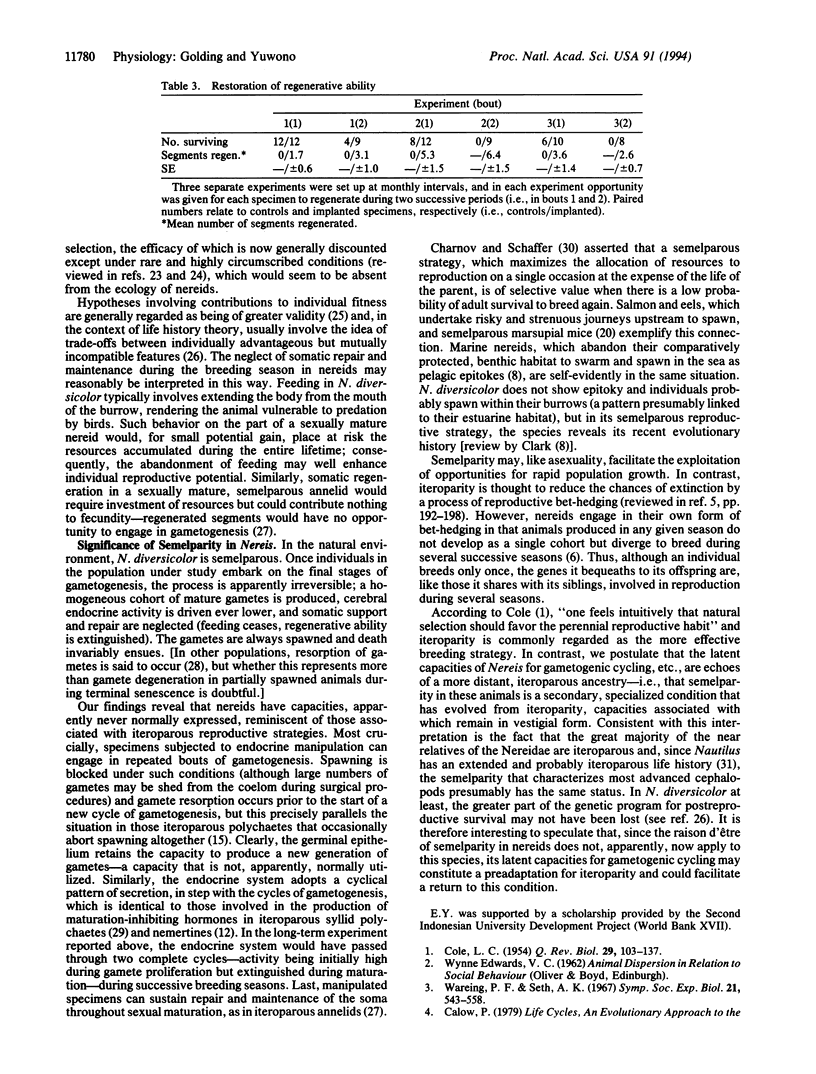
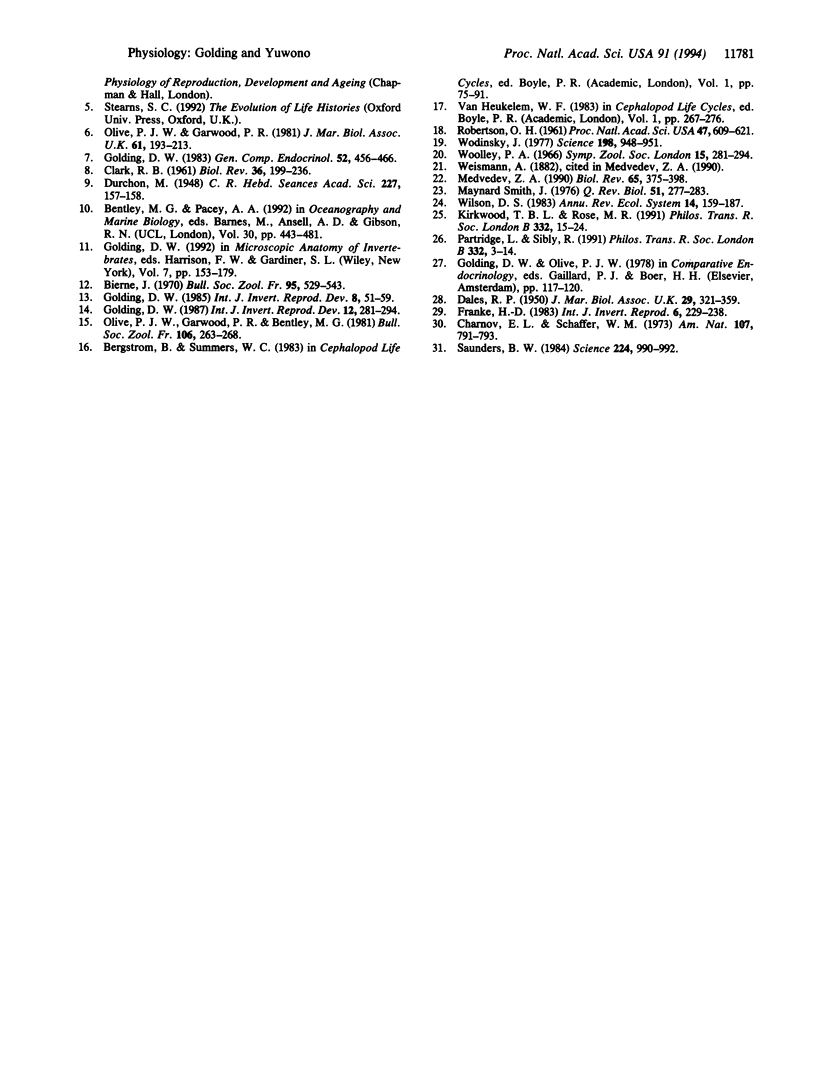
Images in this article
Selected References
These references are in PubMed. This may not be the complete list of references from this article.
- CLARK R. B. The origin and formation of the heteronereis. Biol Rev Camb Philos Soc. 1961 May;36:199–236. doi: 10.1111/j.1469-185x.1961.tb01584.x. [DOI] [PubMed] [Google Scholar]
- COLE L. C. The population consequences of life history phenomena. Q Rev Biol. 1954 Jun;29(2):103–137. doi: 10.1086/400074. [DOI] [PubMed] [Google Scholar]
- Golding D. W. Endocrine programmed development and reproduction in Nereis. Gen Comp Endocrinol. 1983 Dec;52(3):456–466. doi: 10.1016/0016-6480(83)90186-7. [DOI] [PubMed] [Google Scholar]
- Kirkwood T. B., Rose M. R. Evolution of senescence: late survival sacrificed for reproduction. Philos Trans R Soc Lond B Biol Sci. 1991 Apr 29;332(1262):15–24. doi: 10.1098/rstb.1991.0028. [DOI] [PubMed] [Google Scholar]
- Medvedev Z. A. An attempt at a rational classification of theories of ageing. Biol Rev Camb Philos Soc. 1990 Aug;65(3):375–398. doi: 10.1111/j.1469-185x.1990.tb01428.x. [DOI] [PubMed] [Google Scholar]
- Robertson O. H. PROLONGATION OF THE LIFE SPAN OF KOKANEE SALMON (ONCORHYNCHUS NERKA KENNERLYI) BY CASTRATION BEFORE BEGINNING OF GONAD DEVELOPMENT. Proc Natl Acad Sci U S A. 1961 Apr;47(4):609–621. doi: 10.1073/pnas.47.4.609. [DOI] [PMC free article] [PubMed] [Google Scholar]
- Saunders W. B. Nautilus growth and longevity: evidence from marked and recaptured animals. Science. 1984 Jun 1;224(4652):990–992. doi: 10.1126/science.224.4652.990. [DOI] [PubMed] [Google Scholar]
- Thadani U., Maranda C. R., Amsterdam E., Spaccavento L., Friedman R. G., Chernoff R., Zellner S., Gorwit J., Hinderaker P. H. Lack of pharmacologic tolerance and rebound angina pectoris during twice-daily therapy with isosorbide-5-mononitrate. Ann Intern Med. 1994 Mar 1;120(5):353–359. doi: 10.7326/0003-4819-120-5-199403010-00001. [DOI] [PubMed] [Google Scholar]
- Wareing P. F., Seth A. K. Ageing and senescence in the whole plant. Symp Soc Exp Biol. 1967;21:543–558. [PubMed] [Google Scholar]
- Wodinsky J. Hormonal inhibition of feeding and death in octopus: control by optic gland secretion. Science. 1977 Dec 2;198(4320):948–951. doi: 10.1126/science.198.4320.948. [DOI] [PubMed] [Google Scholar]



